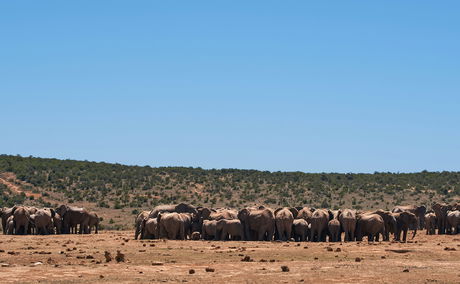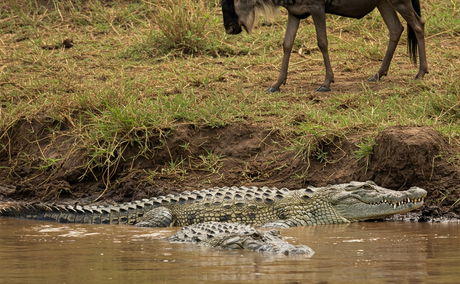Discover the fascinating survival strategy of elephant herds—bunching behavior. From protecting calves against predators to symbolizing deep family bonds, bunching showcases the intelligence and unity of elephants. However, threats like poaching and habitat loss disrupt these vital instincts, underscoring the need for conservation. Explore these majestic creatures with Kijani Tours and witness their intricate social dynamics firsthand. Embrace responsible tourism and connect with the heart of nature's narrative.
Discovering Tanzania: How Weather Enhances Your Travel Experience

When planning your adventure in Tanzania, don't overlook the pivotal role that weather plays in influencing your experience. Visualize embarking on a safari in the Serengeti under a clear blue sky, witnessing the magnificent wildebeest migration against the stunning backdrop of golden savannahs. Or picture yourself exploring the lush landscapes of Zanzibar during the dry season, where the sun casts a warm glow on pristine beaches, inviting you to relax and soak in the tropical beauty. By choosing the right time to visit, you can fully immerse yourself in Tanzania's unique ecosystems and vibrant local cultures. Let the weather enhance your journey; embrace the sun-drenched afternoons and the gentle breezes of the evenings, and create memories that will last a lifetime.
The Dry Season: June to October
The dry season, from June to October, is considered the best time to visit Tanzania. During these months, the weather is pleasantly warm and dry, making it ideal for outdoor activities and wildlife safaris. The clear skies and minimal rainfall provide excellent visibility for spotting the Big Five in national parks like Serengeti and Ngorongoro Crater. Additionally, the dry season coincides with the Great Migration, where millions of wildebeest and zebras traverse the Serengeti plains, offering a spectacular wildlife spectacle.
The Wet Season: November to May
The wet season in Tanzania is divided into two periods: the short rains (November to December) and the long rains (March to May). While some travelers may shy away from visiting during the wet season, it has its own unique charm and advantages. The landscape transforms into a lush, green paradise, with blooming flowers and abundant birdlife. This is also the calving season for many animals, providing a chance to witness newborn wildlife. The wet season is less crowded, offering a more intimate and serene experience in popular tourist spots.
Coastal Bliss: Year-Round Beach Paradise
Tanzania's coastal regions, including Zanzibar, Pemba, and Mafia Island, enjoy a tropical climate with warm temperatures year-round. The coastal weather is perfect for beach lovers, with opportunities for swimming, snorkeling, and diving in the crystal-clear waters of the Indian Ocean. The gentle sea breeze and sunny days create an idyllic setting for relaxation and exploration of the vibrant marine life and coral reefs.
Mountain Adventures: Climbing Kilimanjaro
For adventure seekers, the weather plays a crucial role in planning a successful climb of Mount Kilimanjaro, Africa's highest peak. The best time to embark on this challenging trek is during the dry seasons (January to March and June to October), when the trails are less slippery and the skies are clearer. The favorable weather conditions increase the chances of reaching the summit and enjoying the breathtaking panoramic views.
Cultural Festivals: Celebrating Tanzanian Heritage
Tanzania's weather also influences the timing of various cultural festivals and events. The dry season is a popular time for traditional celebrations, such as the Mwaka Kogwa festival in Zanzibar celebrated by the Shirazi people in Zanzibar, marks the traditional New Year in July, the Serengeti Cultural Festival, Sauti za Busara is one of East Africa's largest music festivals, held annually in Zanzibar. It showcases a diverse range of African music genres, including Taarab and Bongo Flavor, and features performances, workshops, and cultural exhibitions, making it a key event for music lovers, Bagamoyo Arts Festival celebrates Tanzanian arts and culture in the historic town of Bagamoyo. The festival includes performances by local and international artists across various art forms, along with workshops and exhibitions that promote creativity and cultural exchange, emphasizing the town's historical significance. These events offer a unique opportunity to immerse yourself in the local culture, music, dance, and cuisine, enriching your travel experience.

Finally, the weather in Tanzania plays a substantial role in shaping your travel experience. Whether you are travel around the wildlife-rich savannas, relaxing on pristine beaches, conquering mountain peaks, or participating in cultural festivities, understanding the climate and planning your visit accordingly can enhance your journey. Embrace the diverse weather patterns and let them guide you to the best that Tanzania has to offer, creating memories that will last a lifetime.
Unlock More Insights
The Great Migration is a breathtaking event in nature, with over 1.5 million wildebeests, zebras, and gazelles traversing the Serengeti-Mara ecosystem. Each year, these animals confront the perilous Mara River, home to hungry crocodiles, where hesitation mixes fear with survival instinct. The migration is driven by seasonal rains that dictate grazing availability, underscoring the delicate balance of the ecosystem, with predators like lions playing a crucial role in this dynamic. As wildebeests...
Facts About Mount Kilimanjaro takes readers on an inspiring journey into the wonders of this iconic peak. As the world's tallest free-standing mountain, Kilimanjaro captivates with its towering height of 5,895 meters and unique volcanic cones—Kibo, Mawenzi, and Shira. The mountain's diverse ecosystems showcase five climate zones, from lush rainforests to icy arctic conditions, supporting rich biodiversity and endemic species. The melting glaciers highlight the urgent impact of climate change, while Kilimanjaro's...



Share This Post